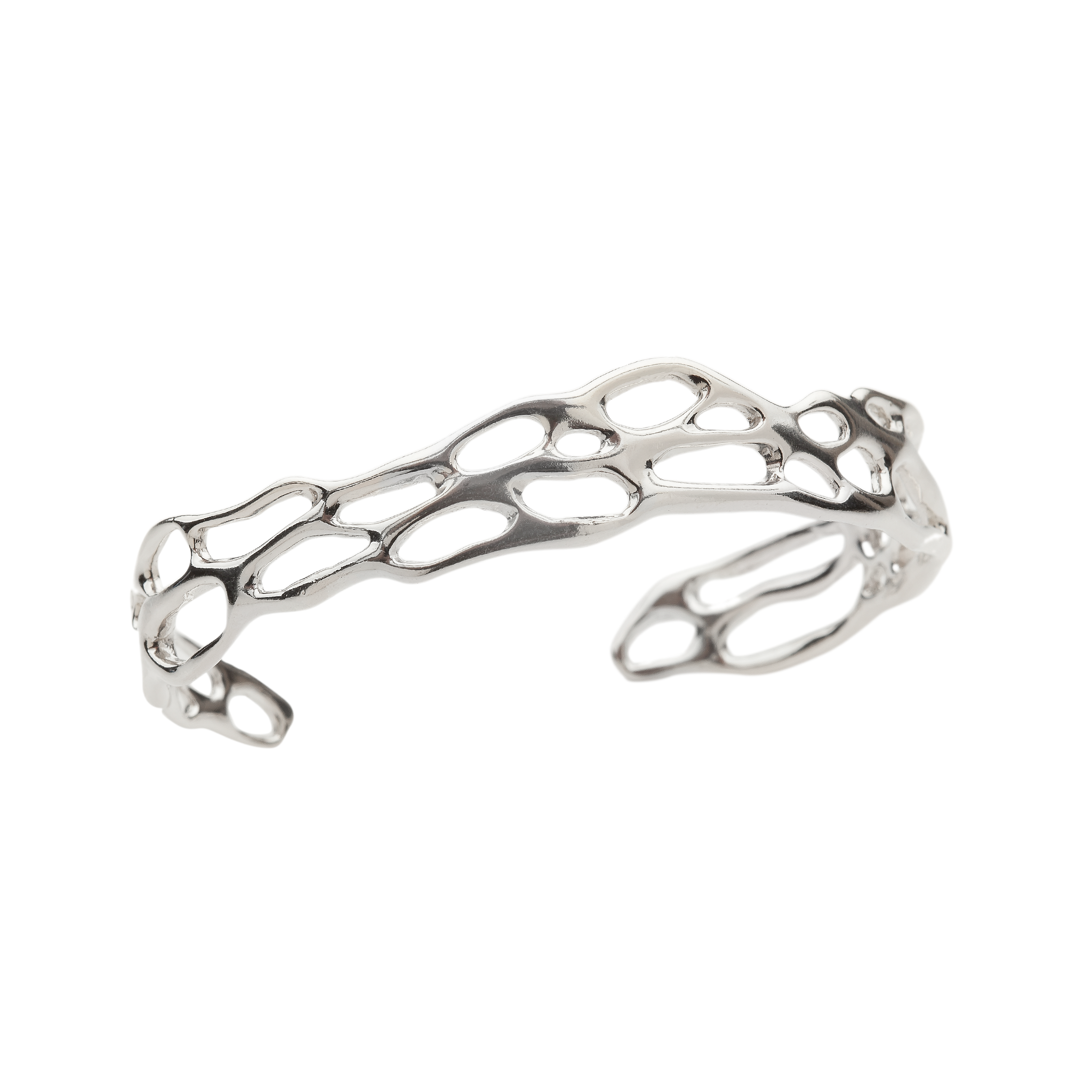Lost wax casting is an ancient and intricate art form that has been used for centuries to create everything from stunning sculptures to intricate pieces of jewelry. While this method is often associated with making jewelry from hand-carved wax models, it can also be a way to capture the delicate beauty of botanical wonders.
So, how do I go from foraged cactus skeleton to piece of jewelry? Here's the short version of my take on this timeless technique:
- create a mold of a piece of prickly pear cactus skeleton
- burn out the skeleton, thereby leaving the imprint of the skeleton in the mold
- fill that mold imprint with molten metal
- break open the mold and remove a solid metal (silver or gold) piece that is an exact replica of the part of prickly pear cactus skeleton
- incorporate that metal piece into a final piece of jewelry
Want more detail about botanical casting? Read on!
The journey of lost wax casting begins with the creation of a wax model. In the context of botanical objects, this might involve meticulously sculpting a flower, leaf, or even an entire plant. The level of detail and precision in the wax model is crucial, as it will be faithfully replicated in the final metal piece.
Once the wax model is perfected, it is encased in a heat-resistant material, forming a mold that will later serve as the vessel for the molten metal. This mold is then heated, causing the wax to melt and flow out, leaving behind a hollow space in the exact shape of the original botanical model.
With the mold ready, the next step is to introduce molten metal into the hollow space. This metal can range from bronze and brass to silver or gold, depending on the desired final piece. The metal is carefully poured into the mold, filling every nook and cranny of the botanical form.
The metal is left to cool and solidify, creating a perfect replica of the wax model. Once the metal has hardened, the outer mold is removed, unveiling the exquisite metal botanical object within.
Finishing Touches:
The freshly cast metal botanical piece may undergo additional processes to refine its appearance. This could involve polishing to enhance the shine and luster of the metal, as well as any necessary detailing to accentuate the features of the plant.
Applications and Artistry:
Lost wax casting of botanical objects opens up a world of creative possibilities. Artisans can create intricate jewelry pieces inspired by nature, incorporating flowers, leaves, or vines into their designs. Sculptors may choose to craft larger pieces, such as garden sculptures or decorative elements for interior spaces.
The inherent beauty of botanical elements, combined with the precision of lost wax casting, results in pieces that not only capture the essence of nature but also stand as enduring works of art. Each piece tells a unique story, a frozen moment in time when the delicate intricacies of the plant world were transformed into everlasting metal masterpieces.
Conclusion:
Lost wax casting of botanical objects is a fascinating blend of art and craftsmanship, showcasing the ability to immortalize the beauty of nature in metal. As artists continue to explore this ancient technique, we can expect to see an array of stunning botanical creations that celebrate the timeless allure of the plant kingdom.
Personally, I knew I literally wanted to wear the prickly pear fiber pattern.
Using casting to create exact replicas of nature's beauty is how I have achieved this! I love that the jewelry that I create is authentic to the pattern, but yields beautiful, natural, wearable art pieces. Hope the Desert Botanic Collection to wear your love of the Southwestern desert.










